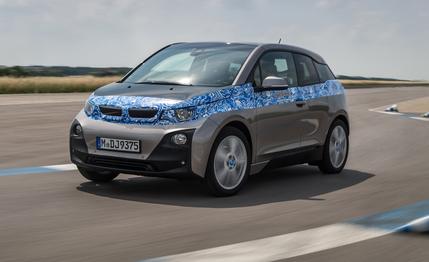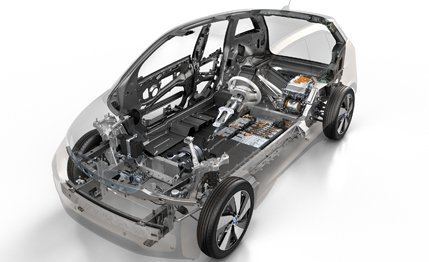 Prototype Drive
Prototype Drive
Regardless of whether the wider driving public has asked for it, the electric car is here—and here to stay. Charting the number of new segment entries by model year creates a graph more steeply inclined than a Himalayan ascent. As recently as five years ago, the EPA certified one electric vehicle for sale in the U.S. In 2013, 10 electrics were in U.S. dealerships, and that number might grow another 50 percent for the 2014 model year.
BMW will roll out its i3 electric sometime during the second quarter of 2014. Different from anything else in the BMW showroom, the i3 is a tall, two-box hatchback with a three-plus-two-door design that mimics that of the discontinued Honda Element. With the front doors open, its rear-hinged half-width rear doors swing out to offer easy entry into the interior, with no fixed B-pillars in the way. The B-pillar supports are built into the leading edge of the rear doors.
Totally Modular
The i3 isn’t bound to conventional architecture, its design hinging on a two-component approach: the Drive module and the Life module. The Drive module is made almost entirely of aluminum. It houses the 170-hp electric motor (located just ahead of the rear axle and offset to the driver’s side); the 450-pound, 96-cell lithium-ion battery; and the suspension pieces. No subframes are used—the motor mounts directly to the chassis. It is body-on-frame construction rethought and optimized for weight reduction—truly, the first production skateboard-chassis car. There are forged-aluminum control arms locating the front struts and five weight-optimized steel links at each rear corner. Even the chassis bolts are made of aluminum.

The Life module is the top half of the matched set, and it uses as much carbon fiber as the lower half uses aluminum, which is to say, plenty. The two modules are bolted and bonded together, creating a stiff structure. The top layer is an unstressed skin made of injection-molded thermoplastic panels that resist dents like the body panels used in Saturn models of the 1990s.
The interior components have been painstakingly lightened, too. Most of the cabin’s panels are made of hemp-reinforced plastic, complete with exposed fibers, cutting each panel’s weight by roughly 10 percent. The front seats utilize composite shells and have no electric adjustments; the back seat’s composite pan is reinforced with carbon-fiber trimmings left over from the shell’s production process.
And while we’re on the topic of back seats, the i3’s is rather roomy, although the seat bottom is low to the floor, forcing passengers into a slightly acute knee angle. However, headroom is exceptional, and hip- and shoulder room are decent (thanks in part to two-abreast rear seating). Glass roof panels produce an airy impression.